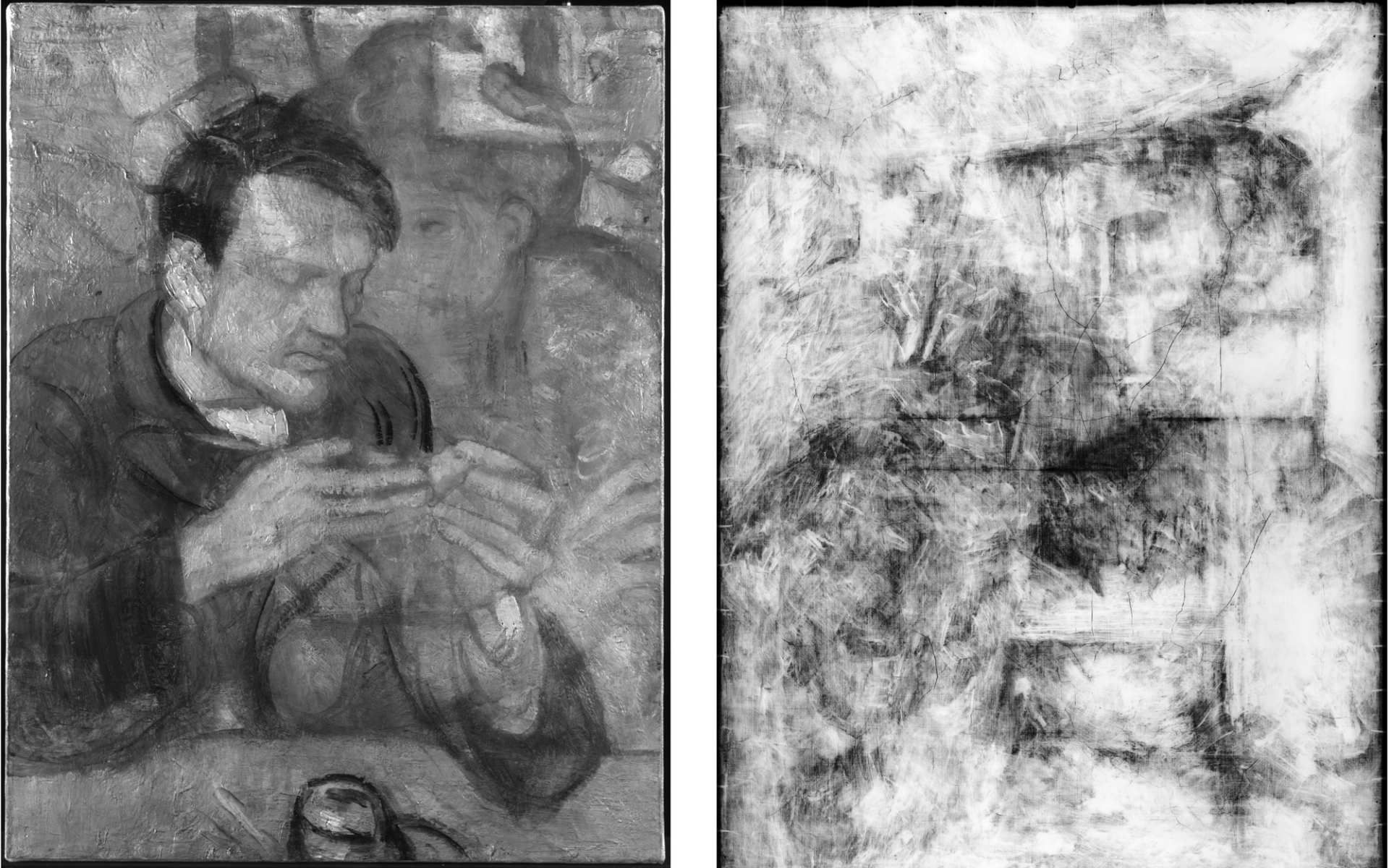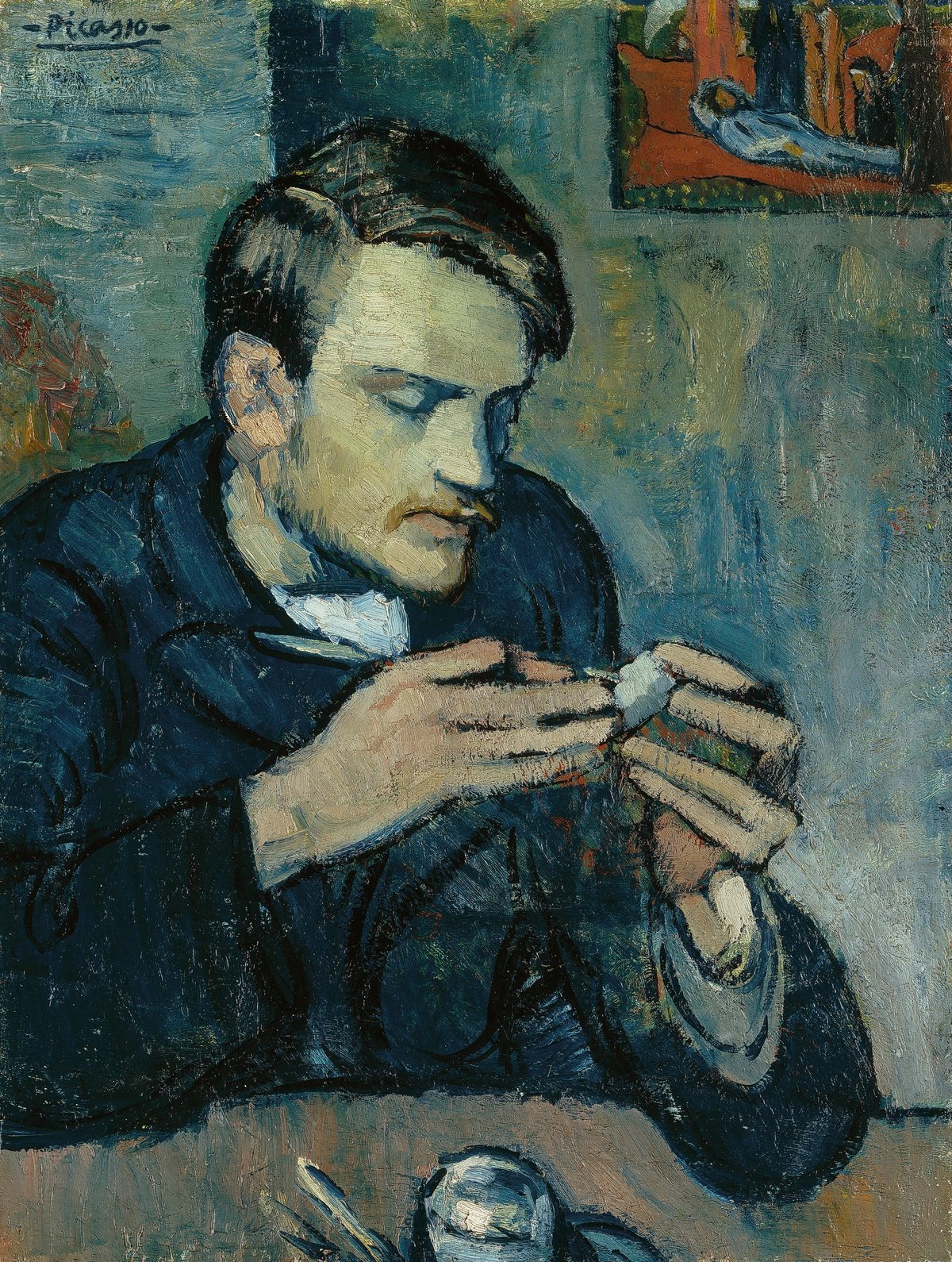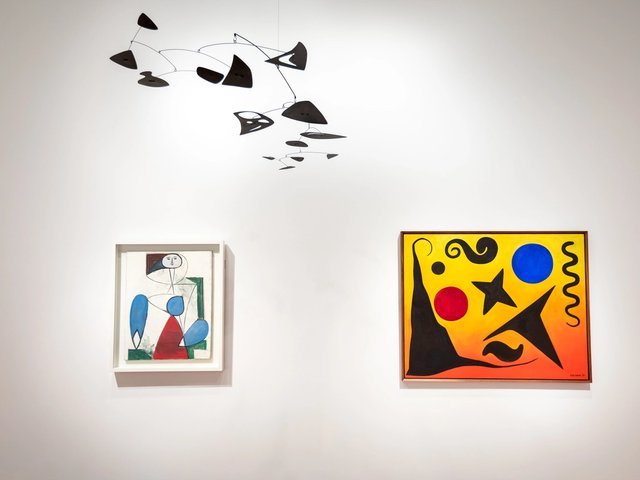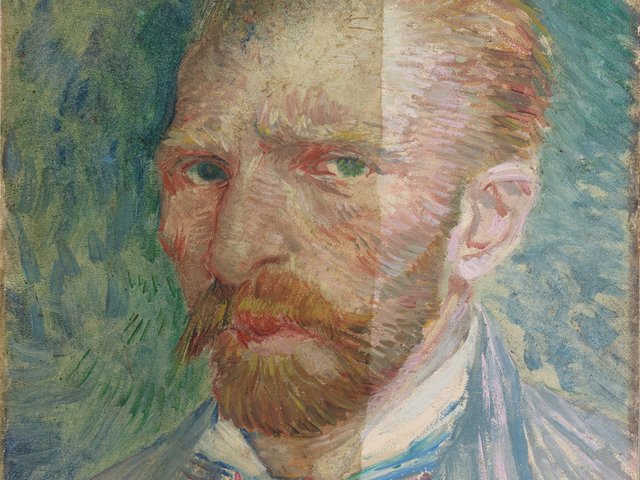Conservators at The Courtauld Institute in London have discovered an image of a mystery woman hidden beneath one of Picasso’s most famous Blue Period paintings. The unknown image was discovered when The Courtauld took x-ray and infrared images of Portrait of Mateu Fernández de Soto (1901), revealing the outline of an unidentified woman with a distinctive chignon hairstyle, which was fashionable in Paris at the turn of the century.
But the research also revealed evidence of another head at an even lower level in the painting, suggesting the canvas was much reused and painted over—something Picasso, like other impoverished artists, would often do to save money.
Aviva Burnstock, professor of conservation at The Courtauld, says in a statement: “Specialist imaging technology such as that used by conservators at The Courtauld may allow us to see the hand of an artist to understand their creative process. In revealing this previously hidden figure we can shed light on a pivotal moment in Picasso’s career.”

Left: Infrared image of Portrait of Mateu Fernández de Soto
Department of Conservation, The Courtauld Institute of Art, London
Right: X-ray image of Portrait of Mateu Fernández de Soto
Department of Conservation, The Courtauld, London
The analysed painting shows Picasso’s sculptor friend Mateu Fernández de Soto sitting at a table. De Soto arrived in Paris late 1901 and was staying in the studio with the artist where the portrait was made.
The Blue Period was an uncertain and depressing time for Picasso, as he flitted between Paris and Barcelona, haunted by the suicide of his friend Carlos Casagemas, who he travelled to France with in the autumn of 1900. The painting on the wall behind De Soto is one of Picasso’s memorial paintings depicting the burial of Casamegas.
According to the Smithsonian Magazine, researchers have discovered hidden underpaintings in several works dating from Picasso’s Blue Period such as The Soup (1903) ans Crouching Beggarwoman (1902). An X-radiograph of the latter, taken by the Art Gallery of Ontario, showed, for instance, the landscape of the Horta Labyrinth park in Barcelona.
Portrait of Mateu Fernández de Soto goes on show later this week in the exhibition Goya to Impressionism. Masterpieces from the Oskar Reinhart Collection (14 February-26 May).
The conservation project was conducted in partnership with the Oskar Reinhart Collection ‘Am Römerholz’ in Winterthur, Switzerland, which is described in a Courtauld statement as “one of the most remarkable art museums of its kind, with a collection that ranges from superlative old master paintings and drawings to a fabled group of Impressionist art”.
The 200-strong collection was assembled in the first half of the 20th century by the textile trading magnate Oskar Reinhart (1885-1965) who quit the family business aged 39 to focus on collecting art.
The exhibition’s lead sponsor is Griffin Catalyst, the “civic engagement initiative” of Kenneth C. Griffin, the founder and chief executive of the hedge fund Citadel who last year gave $10m to Pérez Art Museum Miami. Griffin also sponsored the exhibition Frank Auerbach. The Charcoal Heads at The Courtauld last year.




